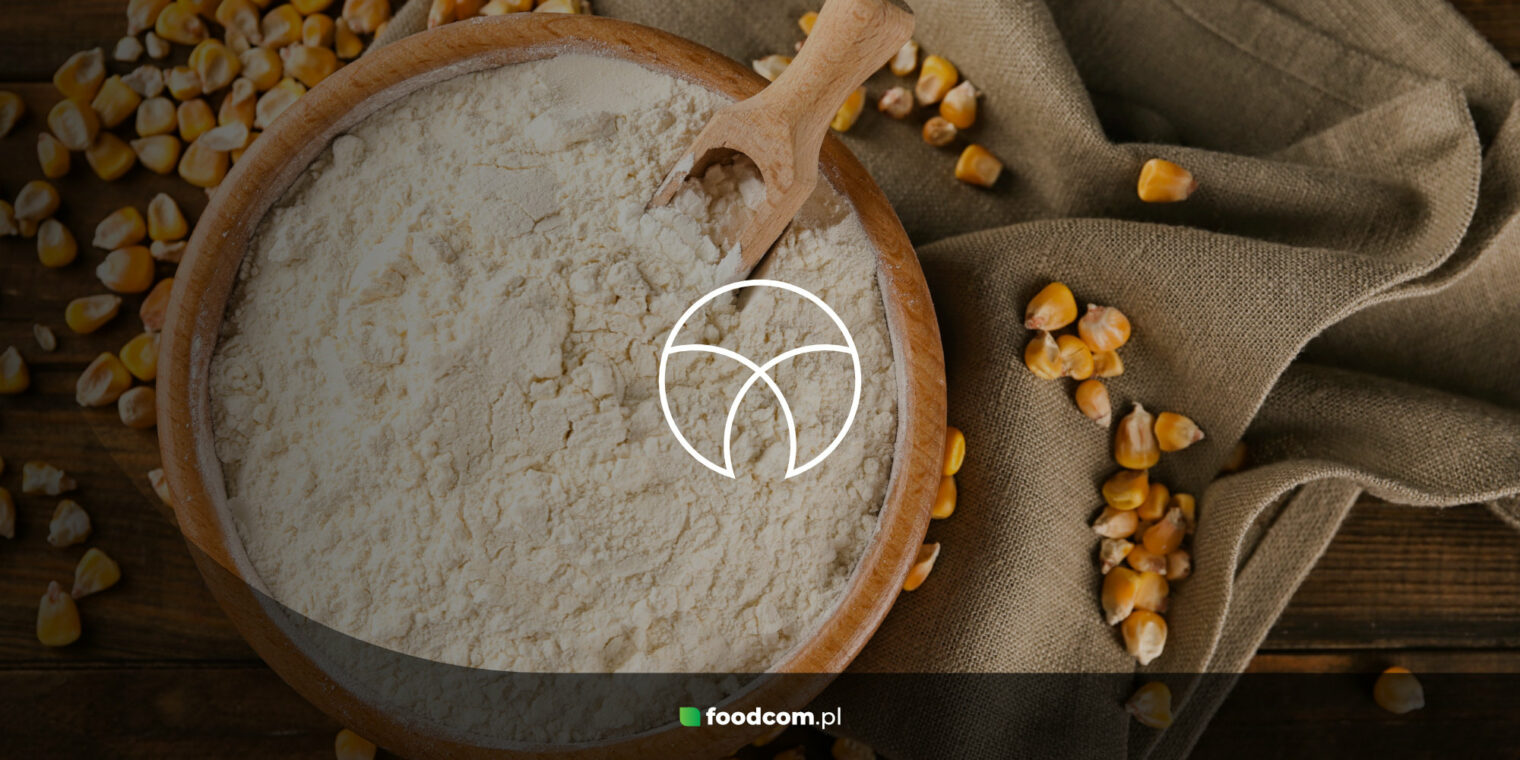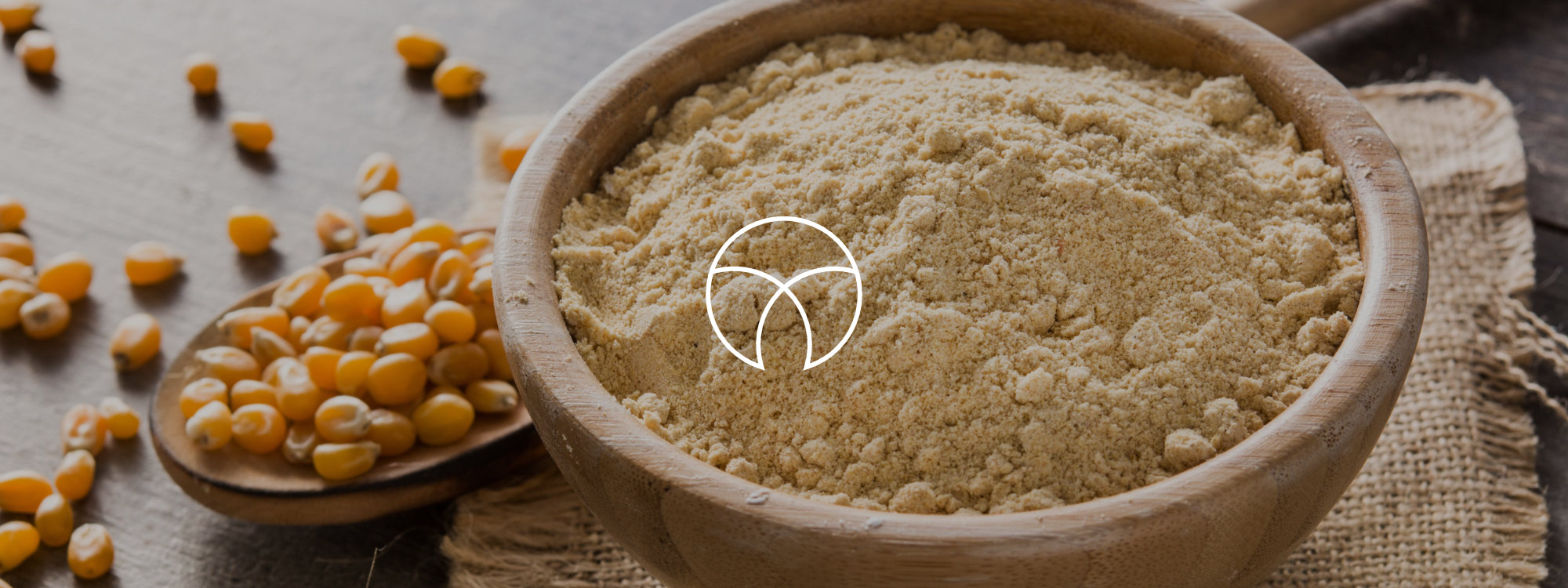- Corn Starch is characterized by its thermal stability and gelling ability.
- It has many uses in various industries.
- Corn Flour is a valued source of nutritional value and a gluten-free alternative in the food industry.
- Despite their many similarities, Corn Starch and Corn Flour have distinct differences that determine their specific applications in industry.
Corn Starch and Corn Flour are not only foods, but also ingredients with a variety of applications in different industries. How are they similar, and how are they different? To find out, read our article!
What is Corn Starch?
Corn Starch is a form of complex carbohydrate. It is extracted from the endosperm of corn. The manufacturing process of Native Corn Starch begins with cleaning and grinding the corn endosperm. The next step is the separation of gluten and starch, and the resulting suspension is dried to turn it into a powder. The entire process is automated, industrial and subject to strict quality and hygiene standards.
Corn Starch is a source of energy, but it is more appreciated and used for its functional properties. It is a thickening agent because when heated, the starch molecules absorb water, which leads to swelling and the formation of a gel. It is thermally stable and maintains its properties even at high temperatures.
Uses of Corn Starch
Corn Starch is widely used in the food industry because of its thickening properties and neutral taste. It is used in the preparation of sauces, soups, and prepared meals. Because it is gluten-free and heat-stable, it is also used in gluten-free baked goods.
In addition to food production, Corn Starch is also used in animal feed. Not only does it serve as a thickener, but it also has a high nutritional value – it is a source of energy for animals. Corn Starch gives the right consistency to feed, which has a positive effect on the consumption of animals. It is used in the diet of cattle, poultry and as a component of fish feed.
In the pharmaceutical and medical industries, Native Cornstarch is used as a lubricant, especially for surgical gloves. In the cosmetics industry, the starch can be used as a talc substitute in baby products. Its gentle absorbent properties make it a safe alternative, especially in products for sensitive children’s skin.
In paper manufacturing, Native Corn Starch plays an important role as a filler. Its addition to paper pulp increases the stability of the paper and improves its structure and durability. In addition, this starch is involved in the production of adhesives and provides excellent binding power. Corn Starch also plays an important role as a key raw material in the production of bioethanol, a biofuel obtained by fermenting the starch and sugar contained in corn.
What is Corn Flour?
Corn Flour is a product obtained by grinding dry corn kernels into a powder form, resulting in a flour with varying degrees of grinding, ranging from very fine to coarse. It is characterized by a distinct flavor and aroma, slightly sweet and buttery.
Corn Flour is gluten-free and rich in fiber, vitamins and minerals. It imparts a distinct corn flavor and yellow color to foods. In addition, Corn Flour is a thickener and can be used as a substitute for wheat flour.
What are the uses of Corn Flour?
Corn Flour is a valued ingredient in the food industry thanks to its unique composition and properties. It is used as an additive in the production of various foods such as soups and sauces, as it affects the texture and flavor of the final product. It is also used in fried products, such as savory snacks, because it provides a crunchy texture. Corn Flour is also commonly used in baking breads, cakes, pies and other baked goods as a thickening agent. Since Corn Flour is gluten-free, it is used as a substitute for wheat flour in the manufacture of gluten-free products.
Corn Starch vs. Corn Flour – similarities and differences
Corn Starch and Corn Flour are often confused, but they are two different products. What they have in common is that they are derived from corn, serve as a source of energy, and are gluten-free, making them suitable for people with gluten intolerance. They are also used in the food industry primarily as thickeners.
The differences between Corn Starch and Corn Flour are:
- manufacturing process – Corn Starch is made by cleaning and grinding the endosperm of corn; Corn Flour is made by grinding dry corn kernels;
- taste – Corn Starch is tasteless and does not impart flavor to food, while Corn Flour has a slightly sweet taste;
- texture – Corn Starch is very fine, while Corn Flour can vary in fineness, from very fine to rather coarse.
- nutritional value – Corn Flour has a much higher nutritional value than starch, it is rich in fiber, vitamins and minerals, Corn Starch is actually just a source of energy;
- applications – Corn Starch is used in food, pharmaceutical, cosmetic, paper and bioethanol production, while Corn Flour does not have such a wide range of industrial applications as starch.
Why Foodcom?
Our great team of Sales Support will help our Traders conduct the contract and business deals in a smooth and efficient way to ensure the best quality service to all our Business Partners. Our logistics team will take care of transportation and the financial department will be responsible for all matters connected with the financial part of the deal. Do not hesitate! Contact us.









